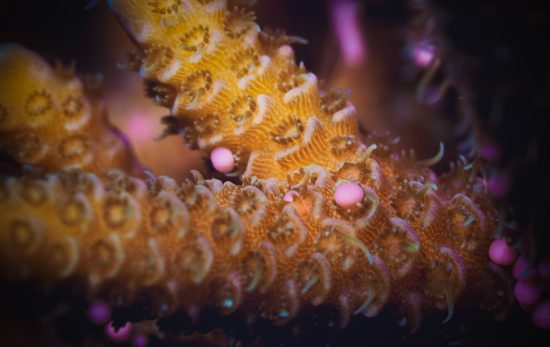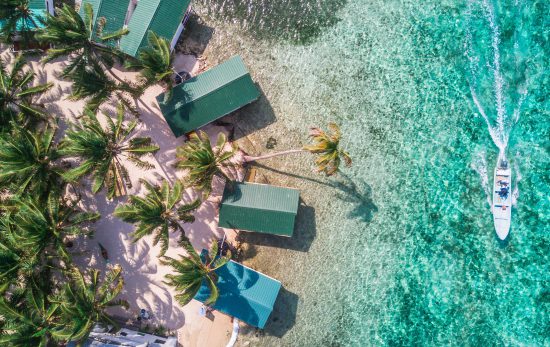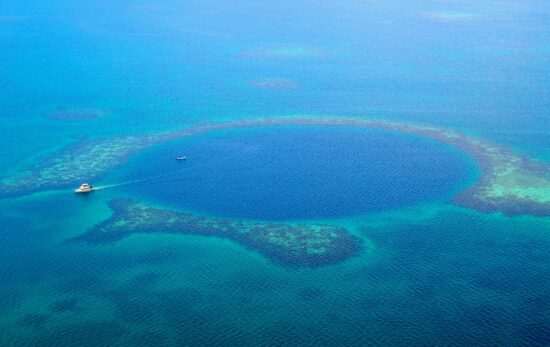Manatees once thrived along the coast of Brazil, throughout the Caribbean and as far north as the southern United States. Today, a few isolated populations exist in Florida, Central America and pockets of West Africa.
November is Manatee Awareness Month, so it’s the ideal time to learn more about these gentle creatures. Better yet, show your support by scheduling a diving or freediving trip to see them.
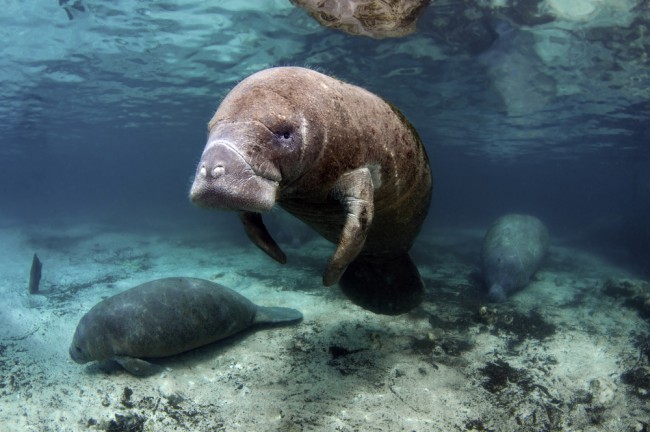
Manatee, Dugong or Sea Cow?
Dugongs and manatees are both called sea cows, but they are different animals. Both are members of the same family (Sirena) and both live in shallow, marshy areas; however, dugongs live their entire lives in saltwater, while manatees can spend some or all of their time in freshwater. Learn about other differences between dugongs and manatees.
Manatees prefer shallow water about 1-2 metres/3-6 feet deep and water temps above 20°C/68°F. When water temps dip below this level, manatees must migrate to warmer water to maintain a healthy body temperature.
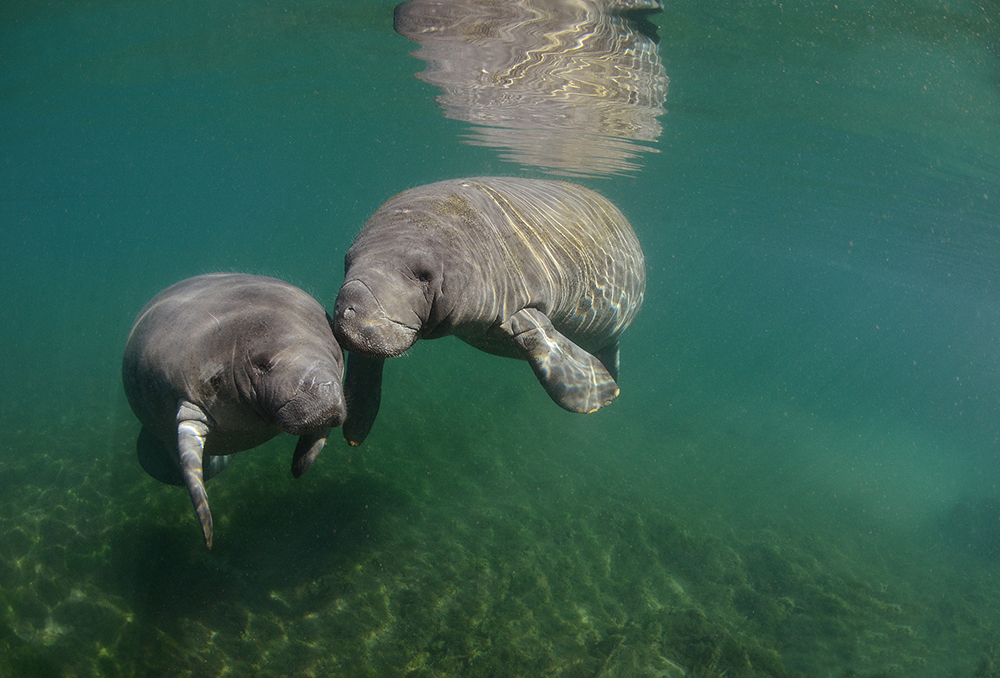
The Gulf Coast of Florida, USA
The manatees’ quest for warm water in winter is what draws them to rivers and springs in Florida – one of the best places to encounter manatees. When ocean temperatures in the Gulf of Mexico drop, the manatees migrate to Crystal River, Florida (about a 90-minute drive north of Tampa). They can also be spotted near Homosassa River, Florida. Read about manatee encounters and other bucket list diving experiences in Florida.
Belize
Belize is one of the best places in Central America to encounter manatees. The three marine reserves below offer organised tours year-round:
- Corozal Bay Wildlife Sanctuary, Northern Lagoon
- Gales Point Manatee Wildlife Sanctuary, Southern Lagoon
- Swallow Caye Wildlife Sanctuary – about 11km/7m from Belize City
The Dominican Republic
Manatees live in various locations around the island, including Jaragua National Park in the south and on the west side of the island. Our friends at Dressel Divers sometimes see manatees while diving from their Bávaro location (see video below). You can also hike to a lagoon in the Estero Hondo Marine Mammal Sanctuary where you may be greeted by a friendly manatee.
Other Places to See Manatees
Tortuguero, Costa Rica and Digya National Park, Ghana are other places you may see manatees; but as of this writing, neither offer diving or snorkeling tours. Iquitos, Peru is home to the Centro de Rescate Amazónico (CREA) where orphan baby manatees are cared for until they can survive on their own in the wild. Visitors are welcome and are an important source of funding, but the centre does not offer diving or snorkeling opportunities.
How to Dive With Manatees
As with any marine creature, you should stay a respectful distance and never approach the animal. Instead, remain still and let it swim over to you. Also, be mindful of your buoyancy and fin kicks as your manatee encounter will likely take place in a shallow area with fragile habitat.
Manatees are curious and generally not afraid of humans, but the loud bubbles exhaled by divers can scare them. For this reason, you may want to snorkel or freedive instead of scuba dive with manatees.
Show Your Support for Manatees
A cousin of the manatee is already extinct. Steller’s Sea Cow lived in the Bering Sea, but was hunted to extinction within 30 years of being discovered. Manatees are threatened by habitat destruction, strikes by careless boaters and (to a lesser degree) hunting.
By diving or snorkeling with manatees as part of an organised tour, you support their preservation. Visit Save the Manatee for other ways you can show your love for sea cows and share fun facts about manatees with your non-diving friends.


